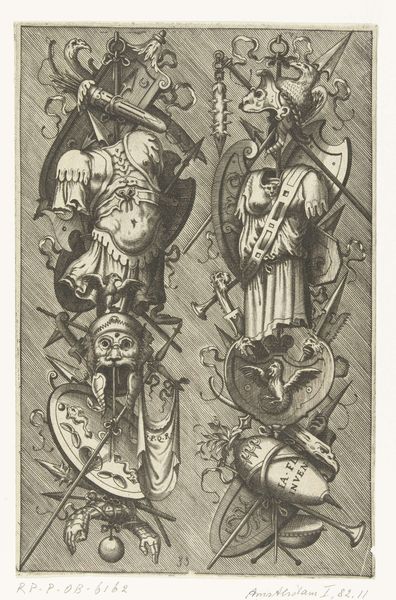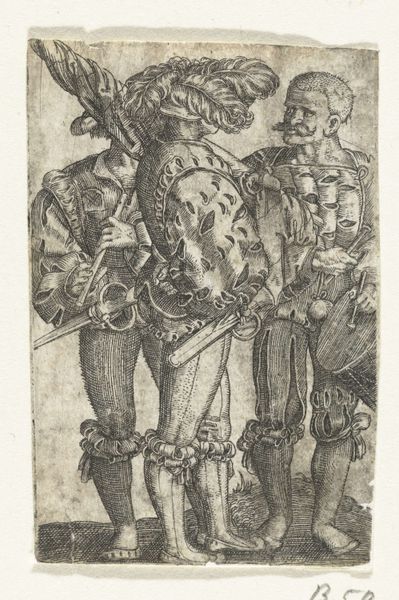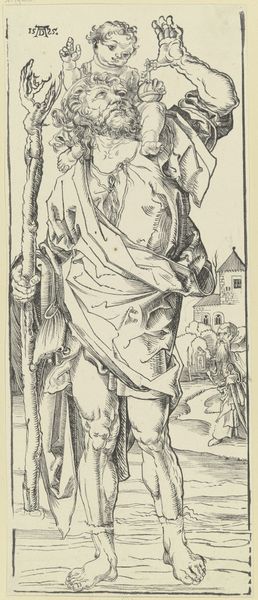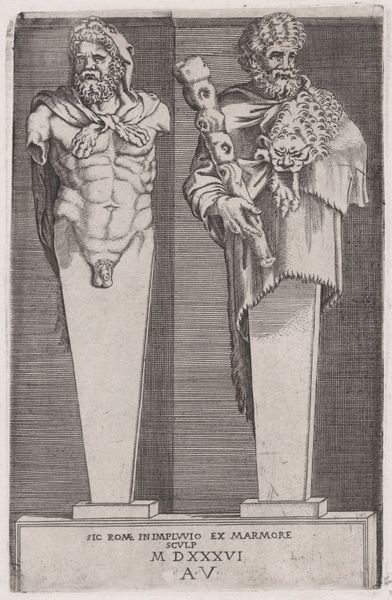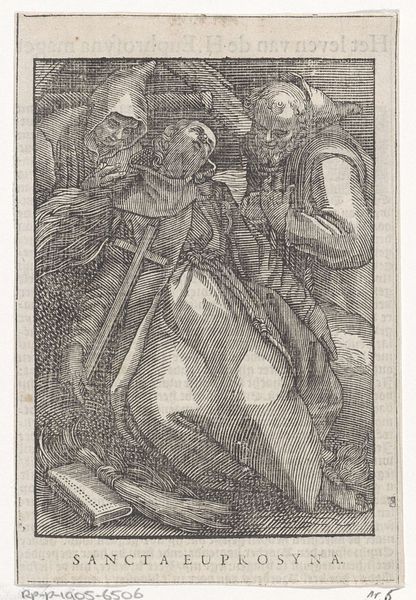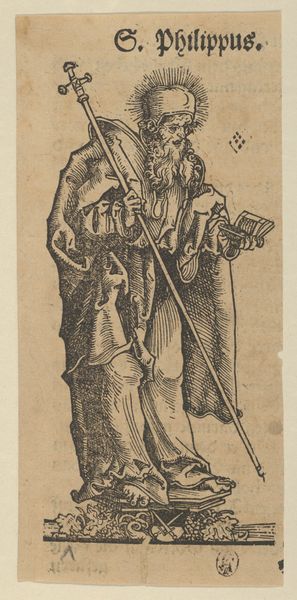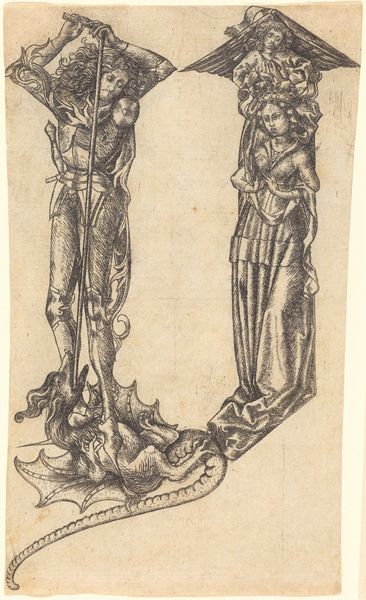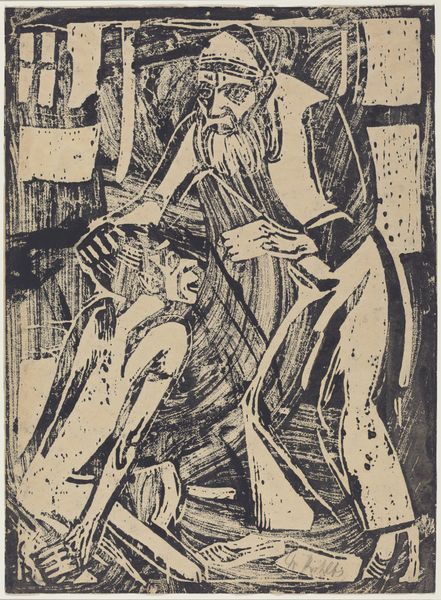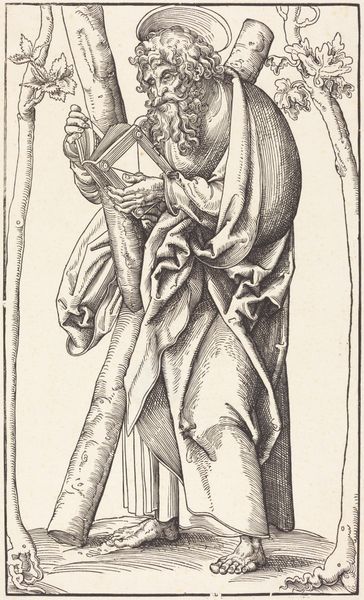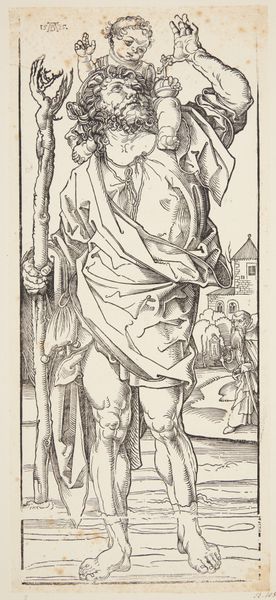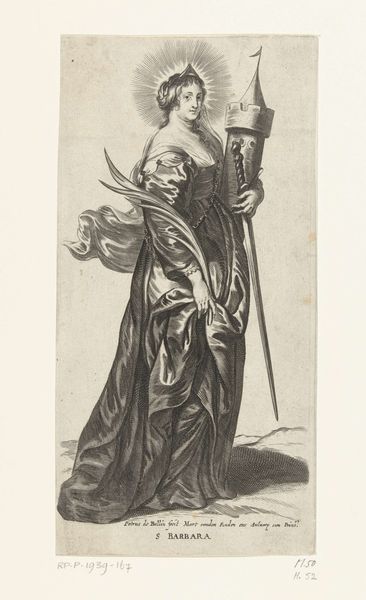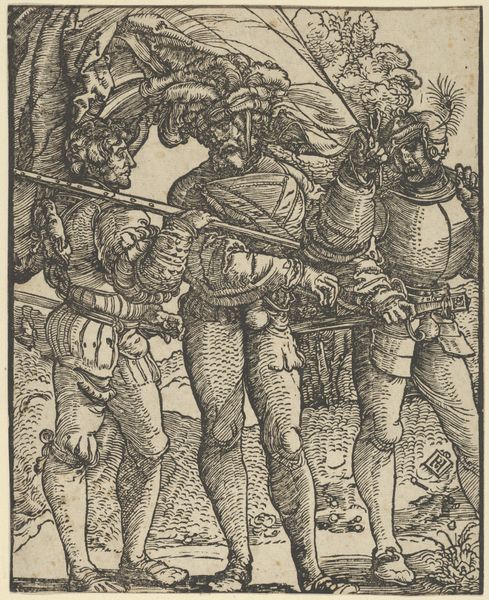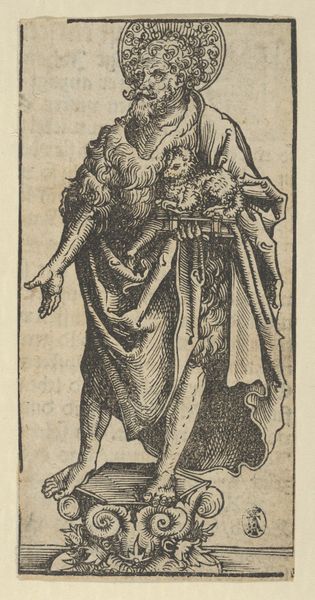
Dimensions: height 282 mm, width 164 mm
Copyright: Rijks Museum: Open Domain
Curator: Look at this, a 1677 engraving by Dirck de Bray called “Lijdenswerktuigen van Christus,” or, “The Instruments of Christ's Passion.” Editor: Well, that title certainly sets a somber tone. At first glance, I see this fascinating compilation of objects, rendered in meticulous detail— almost a still life of suffering. Curator: It’s Baroque symbolism at its finest. On the left, we have implements representing Christ’s torture— the crown of thorns, a depiction of Christ's face itself— draped over various tools. Notice the bell, often used to announce public executions? It's all presented as evidence, almost forensic. Editor: Interesting how de Bray uses engraving – traditionally for disseminating information – to showcase such visceral elements. The choice of ink, the way the lines carve out the image…it transforms the page itself into a site of memory and ritual. The production values mirroring the suffering depicted. Curator: It definitely gives the drawing a haunting quality, doesn't it? Look at the right panel. A Roman column adorned with armour and spears— emblems of earthly power that ultimately condemned Christ. And, perched on top, a rooster, symbolizing Peter's betrayal. The artist isn't just illustrating the Passion; he's offering a commentary on worldly authority. Editor: The stark contrasts, created with simple black ink, emphasize the dramatic chiaroscuro typical of the Baroque era, underlining its artifice, or rather, highlighting a cultural aesthetic of controlled agony and emotional expression as public theater. Was it a single printing or part of a series? Was de Bray making prints for wide consumption? Curator: Little information has survived over its reception, but considering Dirck de Bray’s devout faith, he seems keen on inviting introspection more than merely documenting historical details. Editor: You know, looking closer, one really starts to feel the weight of materials themselves—the iron, the wood, the rope. Everyday items, brutally repurposed. It invites us to contemplate not just the history, but the labor that enacted that history too. It makes suffering concrete, tangible. Curator: Absolutely, and by presenting them so starkly, de Bray compels us to confront the physical reality of Christ's sacrifice, urging each of us, individually, to find its spiritual truth. I leave with the deep awareness of my relationship to it. Editor: The intersection between the means of production and artistic expression, particularly within sacred art is what most holds my fascination. Thanks for walking me through it.
Comments
No comments
Be the first to comment and join the conversation on the ultimate creative platform.
